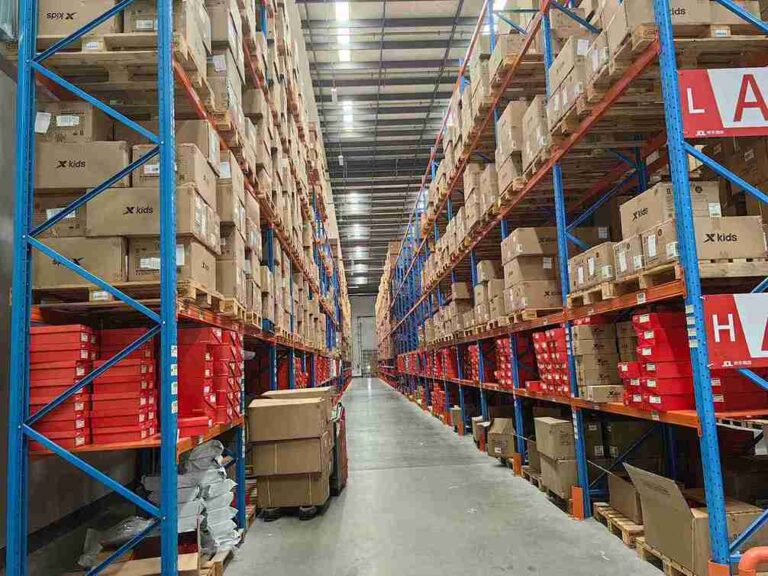📐 "First 50 Enterprise Queries Get Custom 3D Warehouse Design" Plan

Introduction: Why Pallet Rack Safety Barriers Are Essential
Warehouse safety is non-negotiable. Every year, thousands of workplace accidents occur due to pallet rack collisions, forklift impacts, and falling inventory. The solution? Pallet rack safety barriers—a critical investment that protects your workforce, inventory, and infrastructure.
In this comprehensive guide, we’ll explore everything you need to know about pallet rack protection, including:
- The types of safety barriers available
- How impact protection barriers prevent costly damage
- OSHA compliance and warehouse safety regulations
- Best practices for installation and maintenance
- Real-world case studies of barrier effectiveness
By the end, you’ll understand why pallet rack safety barriers are a must-have for any high-traffic warehouse.

H1: What Are Pallet Rack Safety Barriers?
Pallet rack safety barriers are protective structures installed around warehouse racking systems to prevent collisions from forklifts, pallet jacks, and other heavy equipment. They act as a physical shield, absorbing impact and reducing structural damage.
H2: Key Benefits of Pallet Rack Barriers
- Prevent Costly Collisions – Forklift accidents can bend or collapse racks, leading to expensive repairs and downtime.
- Enhance Worker Safety – Barriers reduce the risk of falling debris and injuries.
- Extend Rack Lifespan – By minimizing impact damage, barriers help racks last longer.
- Improve OSHA Compliance – Many warehouse safety regulations require impact protection.
H1: Types of Pallet Rack Safety Barriers
Not all barriers are the same. Choosing the right type depends on your warehouse layout, traffic flow, and risk factors.
H2: 1. Steel Guard Rails
- Best for: High-impact zones
- Features: Heavy-duty steel construction, bolted or welded to the floor
- Ideal for: Forklift lanes, end-of-aisle protection
H2: 2. Column Protectors
- Best for: Upright rack columns
- Features: Rubber or polyurethane padding absorbs shocks
- Ideal for: Narrow aisles with frequent forklift movement
H2: 3. Post Protectors (Bollards)
- Best for: Individual rack support posts
- Features: Durable polymer or steel sleeves
- Ideal for: Preventing direct hits to critical structural points
H2: 4. Wire Mesh Panels
- Best for: Shelving and lower-level rack protection
- Features: Lightweight but strong, allows visibility
- Ideal for: Retail warehouses with frequent manual handling
H2: 5. Impact-Absorbing Barriers
- Best for: High-speed forklift zones
- Features: Energy-absorbing materials reduce collision force
- Ideal for: Distribution centers with heavy machinery
H1: How to Choose the Right Pallet Rack Barrier
Selecting the best pallet rack safety barrier depends on several factors:
H2: 1. Assess Your Warehouse Traffic
- High-traffic areas (e.g., loading docks) need steel guard rails.
- Low-traffic zones may only require post protectors.
H2: 2. Consider Forklift Speed & Weight
- Faster forklifts require impact-absorbing barriers.
- Heavier equipment demands reinforced steel barriers.
H2: 3. Evaluate Rack Layout & Aisle Width
- Narrow aisles benefit from column protectors.
- Wide aisles may need full-length guardrails.
H2: 4. Check OSHA & ANSI Compliance
- Ensure barriers meet OSHA 1910.176(b) for material handling safety.
- Look for ANSI MH16.1 compliance for rack protection standards.
H1: Installation Best Practices for Pallet Rack Barriers
Proper installation maximizes effectiveness. Follow these warehouse safety guidelines:
H2: 1. Secure Anchoring
- Bolt barriers to the concrete floor for stability.
- Avoid temporary mounts—permanent fixtures are safer.
H2: 2. Optimal Placement
- Install barriers at forklift eye level for visibility.
- Place column protectors at every upright post.
H2: 3. Regular Inspections
- Check for cracks, dents, or loose bolts monthly.
- Replace damaged barriers immediately.
H1: Real-World Impact: Case Studies
H2: Case Study 1: Automotive Parts Warehouse
- Problem: Frequent forklift collisions bent rack uprights.
- Solution: Installed steel guardrails in high-traffic zones.
- Result: 80% reduction in rack damage within six months.
H2: Case Study 2: Food Distribution Center
- Problem: Falling inventory due to pallet impacts.
- Solution: Added impact-absorbing barriers at aisle ends.
- Result: Zero product loss from collisions in a year.
H1: Common Mistakes to Avoid
- Ignoring OSHA Regulations – Non-compliance leads to fines.
- Using Weak Materials – Cheap barriers fail under impact.
- Poor Placement – Barriers too low or too far from racks reduce effectiveness.
H1: Conclusion: Invest in Pallet Rack Safety Barriers Today
Pallet rack safety barriers are not optional—they’re a critical safeguard for your warehouse. Whether you need steel guardrails, column protectors, or impact barriers, the right solution will reduce damage, improve safety, and save money.
Don’t wait for an accident. Protect your racks now.
H1: Frequently Asked Questions (FAQs)
H2: 1. How much do pallet rack safety barriers cost?
Prices vary, but steel guardrails range from 500 per unit, while post protectors cost 150 each.
H2: 2. Do barriers affect forklift maneuverability?
No—properly installed barriers guide forklifts safely without restricting movement.
H2: 3. Can I install barriers myself?
Yes, but professional installation ensures OSHA compliance and maximum durability.
H2: 4. How often should I inspect barriers?
Monthly inspections are recommended, with immediate repairs after any collision.
H2: 5. Are there alternatives to steel barriers?
Yes—polyurethane and polymer barriers offer impact resistance with lighter weight.




